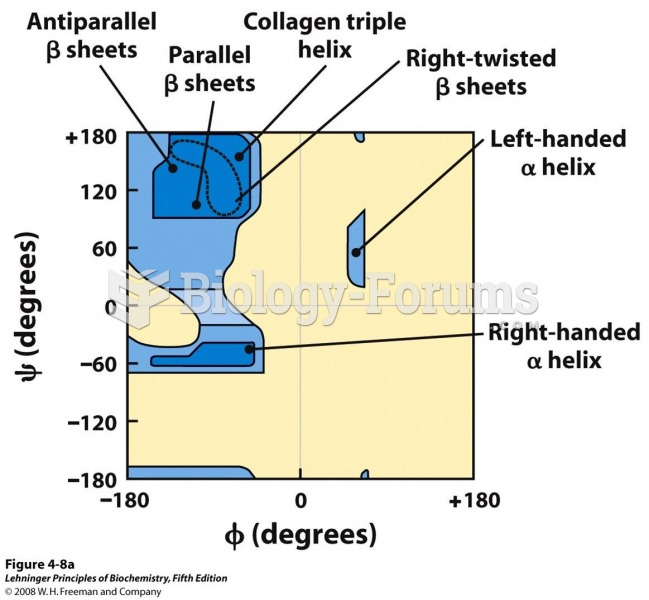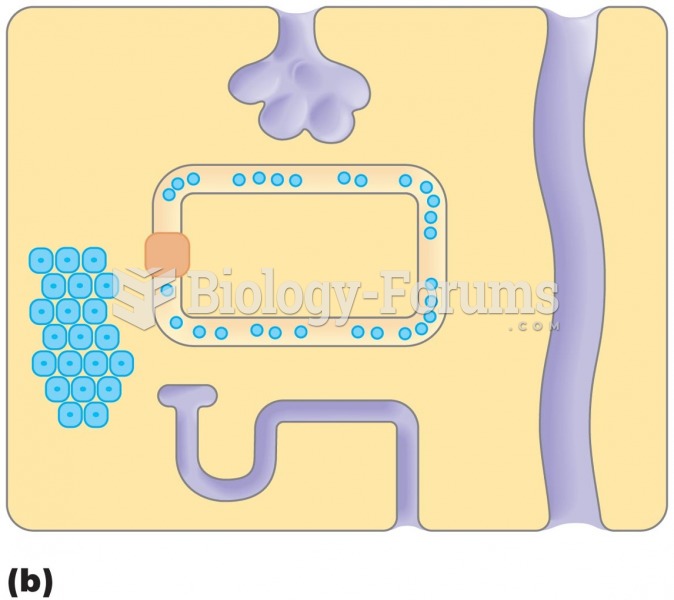This topic contains a solution. Click here to go to the answer
|
|
|
Did you know?
For about 100 years, scientists thought that peptic ulcers were caused by stress, spicy food, and alcohol. Later, researchers added stomach acid to the list of causes and began treating ulcers with antacids. Now it is known that peptic ulcers are predominantly caused by Helicobacter pylori, a spiral-shaped bacterium that normally exist in the stomach.
Did you know?
It is difficult to obtain enough calcium without consuming milk or other dairy foods.
Did you know?
The familiar sounds of your heart are made by the heart's valves as they open and close.
Did you know?
There are more sensory neurons in the tongue than in any other part of the body.
Did you know?
Sperm cells are so tiny that 400 to 500 million (400,000,000–500,000,000) of them fit onto 1 tsp.






